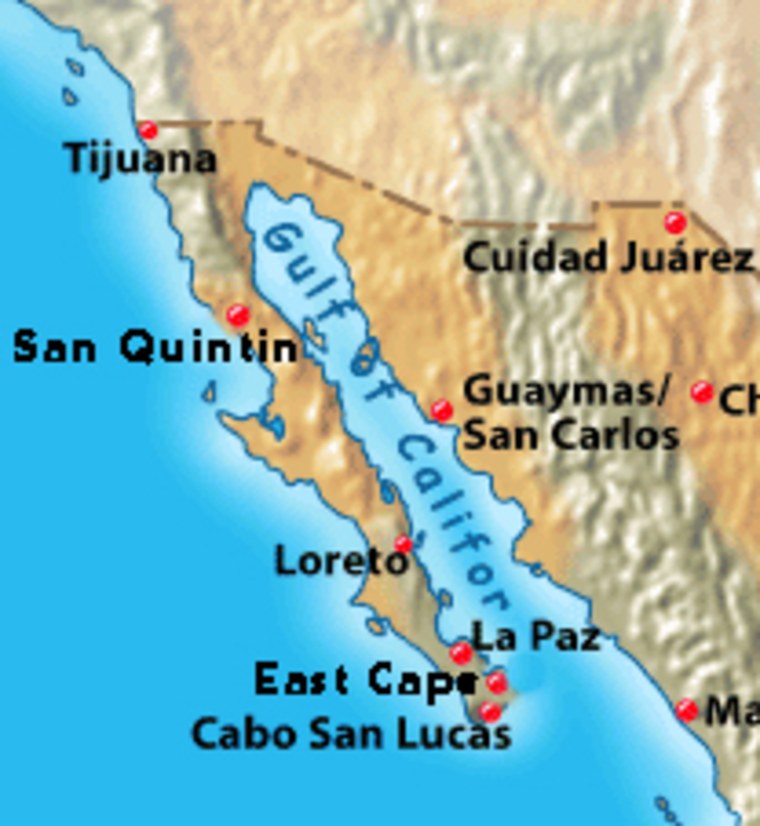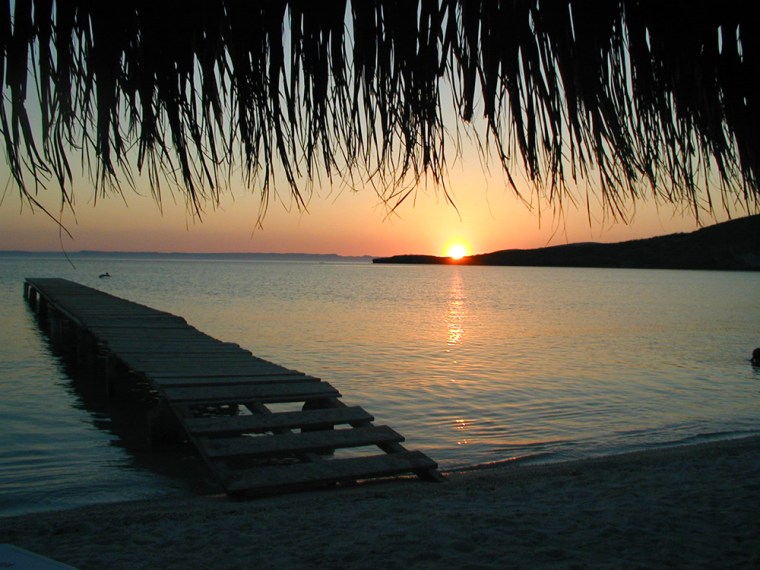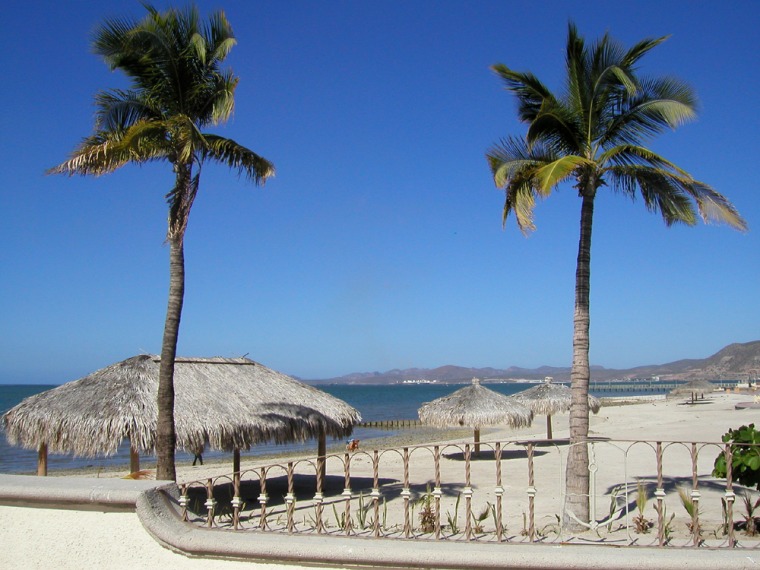For the third time in the last ten minutes, Bill Johnson buried and re-buried his feet in the warm, white sand of Tecolote Beach, and sighed again as he squinted out over the flat, turquoise waters.
Leaning back, Bill looked at his wife while she accepted another frosty umbrella-tipped margarita from their mesero (waiter). He said with a grin, “I feel like I’m part of a Corona Beer commercial sitting here. I have half-a-mind to send a digital photo back home to the guys at work where I hear it’s cold and raining.”
“This was a great and easy get-away idea,” smiled Sherri Johnson from behind her sunglasses, inhaling the fresh tartness of the icy, lime-flavored concoction; then laying down to sun her back. “Here, all the snow is in your glass instead of on your driveway,” she joked.
If you mention the “Mexican Riviera” to most people, images of Puerto Vallarta, Acapulco and maybe even Cabo San Lucas come to mind. Yet, most would be hard-pressed to find La Paz on the map; let alone, know were to find the Baja Peninsula in Mexico.
However, just a quick two-hour flight south of Los Angeles, this sleepy colonial city of 150,000 friendly folks, sits serenely on the Sea of Cortez, nestled near the warm waters of the Bay of La Paz. At the southern tip of the 1,000-mile long finger peninsula, known formally as Baja California, Mexico (Lower California) the city is slowly being discovered laughingly as “The anti-Riviera.”
“This is so different from other Pacific Coast Mexican destinations,” explained a first-time visitor. “It’s not so ‘touristy’ and more like Mexico 50 years ago - without all the high-rises and tourist traps.”

Indeed a walk down the waterfront “malecon” reveals white sand beaches bordered by colorful side-walk cafes and restaurants. Palm trees and thatched umbrellas line the beach where there is a distinct lack of hustle and bustle characteristic of so many other popular Mexican populations. A guitarist strolls by. A local family picnics on the beach. A young Mexican couple peddles by on bicycles giggling and waving at a white-uniformed police officer also astride a bike who waves back and blows his whistle.
Taking an afternoon stroll, Marjorie Duncan of Oregon - on her fourth visit to La Paz - makes a point of always getting some fresh made local Mexican ice-cream.
“It’s the BEST mango ice- cream on Earth!” she explained between big spoonfuls. "They make it by hand here, and people come from all over to just get ice-creams and sit and watch the world and sailboats go by. Everyone is friendly. There are hardly any tourists; and unlike other places I have visited, no one keeps trying to sell me time-shares!” she added with a laugh.
It’s not that there aren’t things for tourists; it’s just that La Paz is a “real” city. The product of Spanish conquistadors, zealous missionaries and roving pirates, La Paz is the capital of the state of Southern Baja (Baja Sur). It is the home of the University, and the soon-to-be national aquarium; is the center for business, agriculture, shipping, light manufacturing and hub to art and culture in the area. Major hospitals, shopping and other amenities are also available.
Life just moves a little slower along its centuries-old cobblestone streets and winding narrow alleys - from the waterfront to the old Spanish mission cathedral. Locals play the Mexican version of bingo on Sunday afternoons; and eating fresh seafood from local open-air vendors is almost an art form.

Half the city still takes a siesta at mid-day, and in the evening, dine European style - al fresco - by candlelight, under the warm starry nights; or catch improvisational waterside concerts by local musicians.
Most visitors fly directly into La Paz’ modern airport, only 10 minutes from downtown and several excellent hotels, where a nice room averages $100/night for two.
Taxis are everywhere, but one often wonders how the drivers make a living, since everything is within walking distance. Foot-power is the way to go, and most tourist-oriented activities are within blocks of the beachfront. For daytime activities, La Paz is a hidden gem for sportfishing, scuba diving and other water sports, where water temperatures can reach into the 80’s and 90’s, with gin-clear visibility. Average daytime temperatures range from the 70’s in the winter to upper 90’s in the summer.
“I know it sounds manufactured,” says Tracy Sullivan, an office manager from San Francisco, “but at night, I really can hear guitars playing from my hotel room overlooking the bay. Combine that with the gentle lapping of the waves and this is the ideal place to just de-compress with a good book and conversation on the balcony. I come here twice-a-year and the hotel treats me like one of the family. Often, there are so few tourists here I just love it!”
